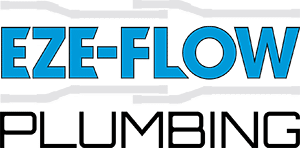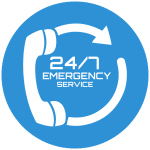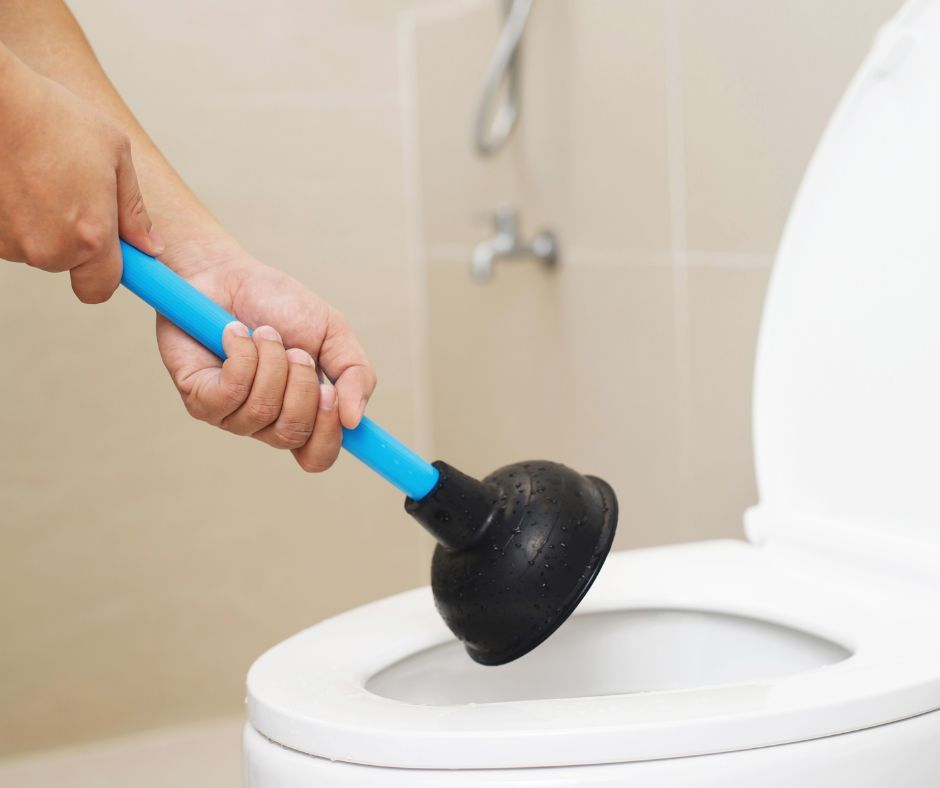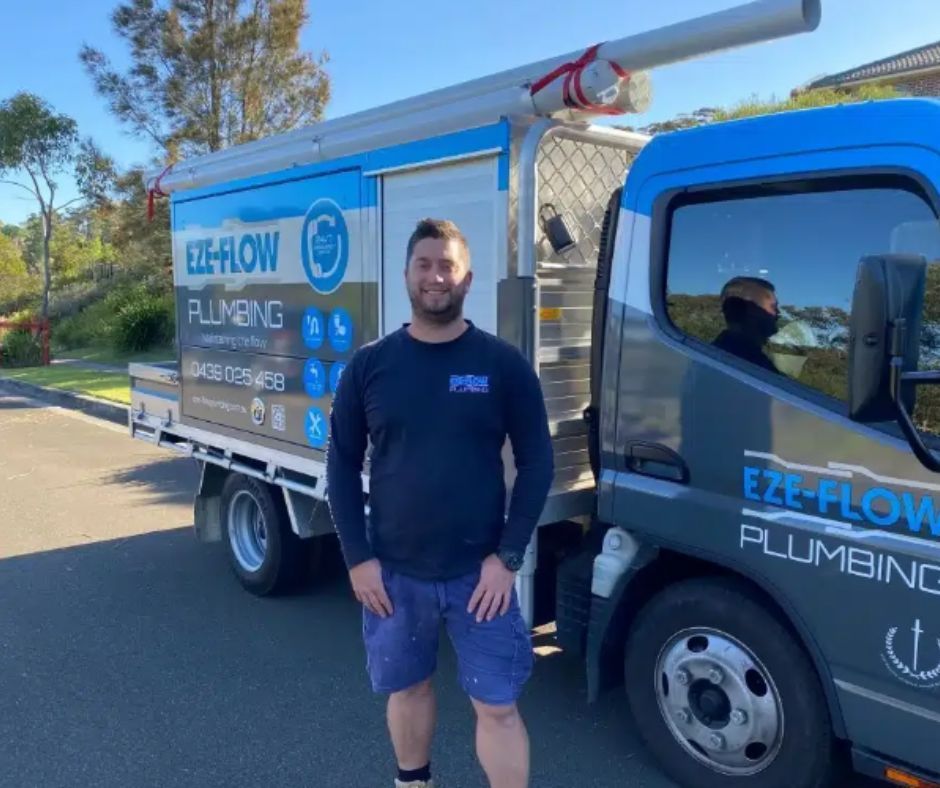What To Do If You Have a Blocked Sewer Pipe
Coming home after a long day should be relaxing, but finding a persistent, unpleasant smell or a toilet that won’t flush can quickly turn comfort into frustration. It can be messy, disruptive and, let’s face it—downright unpleasant!
But the reality is, blocked sewer pipes are something most homeowners will face at some point and it’s essential to know how to handle them before they spiral into bigger issues. Knowing what causes these sewer blockages, how to spot the warning signs and the best way to respond can make all the difference.
With the right approach, you can tackle the problem efficiently and get back to enjoying your home without worry. Keep reading to learn how to identify, manage and prevent blocked sewers for a hassle-free home.
What Happens with a Blocked Sewer Pipe?
A blocked sewer pipe isn’t just a simple inconvenience. It can create a real nightmare for your household, leading to pretty nasty odours that linger and spread throughout your home, no matter how many air fresheners you try. It’s not just a stinky situation either, as sewer gas can be harmful if it builds up indoors and may lead to a costly and hazardous disaster.
The worst part? Blockages can pose health risks to you and your family. Sewage water is full of bacteria and other harmful pathogens, so addressing the problem promptly is essential for everyone’s well-being.
Sewer Pipe Blocked: Whose Sewer Pipe Is It?
Before tackling a blocked sewer pipe, it’s important to know which part of the pipe is your responsibility. The sewer system comprises various sections and the responsibility for maintenance can differ between the homeowner and the local water corporation.
Generally, as a homeowner, you’re responsible for any pipes within your property boundaries up to the connection point with the public sewer main. This includes your household drainage and any pipes that connect your plumbing to the main system. The Water Corporation, on the other hand, is responsible for the main sewer lines and any pipes beyond that connection point.
To get a clearer idea of where your responsibility ends and the water corporation’s begins, check out this visual guide.
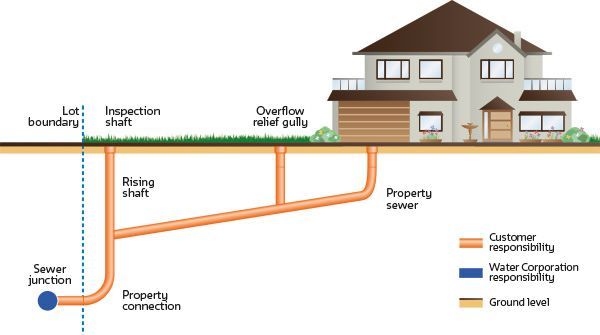
Image sourced from Water Corporation
Knowing this boundary can make it easier to decide when to take matters into your own hands and when to call in professional help.
Signs of Blocked Sewer Pipes
Spotting the signs of a blocked sewer pipe early can prevent minor issues from turning into major headaches. Here are some common indicators that your sewer line may be clogged:
Sewer Smell
If you notice an unpleasant, persistent odour near drains or outside your home, this is often a clear sign of a blockage. The smell is due to trapped wastewater that can’t flow freely and causing gases to build up.
Recurring Clogged Drains
A clogged drain now and then might be normal, but if you find yourself constantly unclogging sinks, showers or bathtubs, there could be a larger issue at play. Recurring clogs often point to a problem in the main sewer line.
Water Backing Up from Drains
One of the more alarming signs of a sewer pipe blocked is when wastewater starts backing up into your home. You might see water coming up from sinks, bathtubs or even your toilet. This not only causes damage but also poses a significant health risk.
Slow Draining Sinks and Gurgling Sounds
If your sink takes longer than usual to drain or you hear gurgling noises after using the water, these could be signs of a blockage. Gurgling happens when trapped air pushes its way through the water in your pipes.
Multiple Plumbing Fixtures are Blocked
When more than one fixture, such as your kitchen sink, shower and toilet, is blocked at the same time, the problem is likely in your main sewer line rather than an individual pipe.
Blocked Toilet
Toilets are one of the most common places to notice a blockage. If your
toilet frequently clogs or won’t flush properly, it could be a sign that the blockage is deeper in the sewer line.
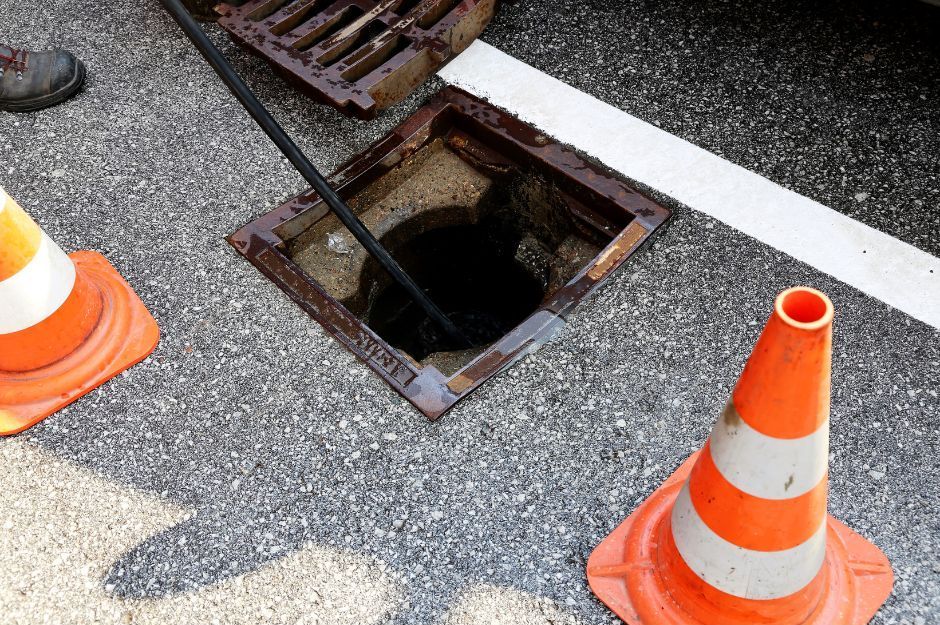
What to Do When a Sewer Pipe is Blocked
Discovering a blocked sewer pipe can be stressful, but knowing what steps to take can help you stay calm and resolve the issue efficiently:
1. Stop Flushing
First things first, avoid flushing any toilets or using sinks and showers. Continuing to use water can worsen the blockage and cause wastewater to back up further into your home.
2. Check the Overflow Relief Gully Outside the Property
The overflow relief gully (ORG) is an essential part of your plumbing system. It’s designed to act as a safety valve, releasing excess wastewater outside rather than inside your home. Check the ORG for signs of water overflow.
3. Check the Property Sewer Boundary Trap or Inspection Shaft
If you know where your sewer boundary trap or inspection shaft is located, take a look to see if you can identify any visible signs of a sewer pipe blocked. This can help you determine whether the issue is within your property’s boundaries or beyond.
4. Check if Other Fixtures Are Draining Properly
Try testing various fixtures around your home to see if the blockage is isolated or affecting the whole system. If multiple fixtures are showing signs of slow draining or backups, it’s a strong indicator of a main sewer line blockage.
Call Eze-Flow Plumbing for Blocked Sewer Pipe Assistance
While DIY methods may seem appealing for a quick fix, blocked sewer pipes are often complex and best handled by experts. This is where Eze-Flow Plumbing steps in. We offer blocked sewer pipe servicing in the Northern Beaches and North Shore area.
We understand the frustration of dealing with blocked pipes and we bring expertise, tools and a commitment to exceptional service to every job. Our team will diagnose the issue swiftly, resolve the problem effectively and leave you with peace of mind.
Don’t let a blocked sewer pipe turn your home into a stressful environment.
Reach out today for fast, reliable and professional assistance!
